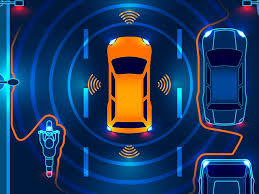
As vehicles become smarter and more connected, the demand for precise, verifiable data in the aftermath of traffic accidents has never been higher. At the center of this technological evolution are Event Data Recorders (EDRs)—automotive “black boxes” that capture key information before, during, and after a collision.
Originally designed for diagnostic and safety purposes, EDRs have evolved into powerful forensic tools. With recent technological advances, they are now capable of providing high-resolution, tamper-proof insights that can dramatically improve accident reconstruction efforts and revolutionize the automobile insurance industry.
What Is an Automotive EDR?
An Event Data Recorder in a vehicle is an onboard device that logs a range of data elements related to vehicle dynamics and driver behavior. These typically include:
Vehicle speed
Brake status
Steering angle
Throttle position
Seatbelt usage
Airbag deployment time
Engine RPM
Impact force and direction
Modern EDRs are typically integrated into a vehicle’s airbag control module or other onboard diagnostic systems. They trigger data logging when an unusual event, like sudden deceleration, is detected.
Technological Advances in Automotive EDRs
1. Increased Data Resolution and Frequency
Traditional EDRs recorded snapshots of data at relatively low frequencies. Today’s advanced models offer:
High-frequency logging (up to 1,000 Hz): Captures microsecond-level details in crash dynamics.
Pre- and post-event windows: Up to 30 seconds before and after a crash, allowing a full view of context.
This granularity provides a clearer picture of how a crash unfolded, essential for accident reconstruction.
2. Expanded Sensor Integration
Newer EDRs gather data from multiple systems, including:
Advanced Driver Assistance Systems (ADAS): Lane keeping, adaptive cruise control, emergency braking.
Camera and radar inputs: Providing visual and object-detection context.
Driver monitoring systems: Eye-tracking and fatigue detection data.
By integrating these data points, EDRs can now help determine not only what happened but also why it happened.
3. Over-the-Air (OTA) Access and Cloud Synchronization
Automotive EDRs are increasingly being designed to:
Transmit data remotely: Using cellular or Wi-Fi connections after a crash.
Synchronize with cloud platforms: Allowing insurers, manufacturers, and law enforcement to access data securely in near real-time.
Comply with privacy laws: Incorporate encryption and owner consent mechanisms.
This enables rapid decision-making while safeguarding data integrity and legal rights.
4. AI-Enhanced Accident Reconstruction
Some insurers and forensics firms are now integrating EDR data into AI models that:
Reconstruct collisions in 3D simulations: Based on EDR telemetry and map data.
Identify liability: Through comparison with historical crash data and traffic law compliance.
Detect fraud: Using machine learning to identify staged accidents or exaggerated claims.
AI allows insurers to move from reactive claim processing to proactive fraud prevention and claim accuracy.
5. Blockchain and Tamper-Proof Logging
In cases of high-stakes claims or disputes, data integrity is critical. New systems are being developed to:
Log EDR data to blockchain ledgers: Creating immutable records.
Timestamp and digitally sign crash events: Ensuring verifiable chain of custody.
Enable third-party auditing: For court-admissible evidence.
This boosts trust among insurers, policyholders, and regulators.
How This Impacts the Insurance Industry
1. Faster, More Accurate Claims Processing
Access to real-time, objective crash data allows insurers to:
Quickly assess fault and damage severity.
Reduce reliance on subjective testimony or biased witness accounts.
Shorten claim cycle times from weeks to days—or even hours.
2. Improved Risk Profiling and Underwriting
Telematics data from EDRs, when combined with driver behavior analytics, helps insurers:
Customize policies based on actual driving habits.
Reward safe drivers with lower premiums.
Identify high-risk individuals before a claim occurs.
This aligns with the broader shift toward usage-based insurance (UBI).
3. Reduced Fraud and Legal Disputes
Insurance fraud costs the U.S. industry alone over $40 billion annually. EDRs:
Help detect staged accidents and inflated damage reports.
Provide legally defensible evidence in subrogation and litigation.
Support arbitration and out-of-court settlements, minimizing legal costs.
4. Regulatory Compliance and Transparency
Jurisdictions like the U.S. and EU are enacting laws that require EDRs in new vehicles. Insurers must now:
Ensure compliance with data privacy and access laws (e.g., GDPR, CCPA).
Offer transparent data handling practices to maintain customer trust.
Collaborate with automakers to access proprietary EDR formats.
Challenges and Considerations
Despite the benefits, widespread adoption of EDR-driven insurance practices faces several hurdles:
Standardization issues: Different automakers use proprietary EDR formats and protocols.
Ownership and access rights: Legal questions around who controls the data—driver, insurer, or manufacturer.
Privacy concerns: Public skepticism about surveillance and data usage.
Cost of data extraction and analysis: Especially for older vehicles or those not connected via OTA systems.
Collaboration between OEMs, insurers, regulators, and advocacy groups will be essential to addressing these issues.
Future Outlook
As vehicle autonomy, connectivity, and AI capabilities grow, so too will the sophistication of EDR systems. Key trends to watch include:
Next-gen EDRs for autonomous vehicles: Recording both machine decisions and human override attempts.
Universal EDR data standards: Driven by global regulatory initiatives.
Real-time insurance models: Where policy premiums adjust dynamically based on live driving data.
Integration with digital twins: Simulating crash outcomes and claim cost estimations before repair estimates are even made.
Conclusion
Advances in Event Data Recorder technology are fundamentally reshaping how vehicle crashes are investigated and how insurance claims are managed. By providing objective, high-fidelity insights into vehicle dynamics and driver behavior, EDRs enable faster, fairer, and more efficient resolution of accidents.
For insurers, this means reduced costs, better customer service, and improved risk management. For drivers, it offers transparency and the promise of more personalized, fair insurance premiums. As this technology continues to evolve, it stands to become one of the most transformative forces in the modern auto insurance landscape.
Recent Posts
- Collaborating Experts: When Forensic Engineers and Attorneys Work Together
- Product Failure Analysis: When Consumer Devices Become Courtroom Evidence
- Forensic Electrical & Fire Investigation Collaboration: When Multidisciplinary Expertise Saves the Case
- Biomechanical Injury Analysis: How Science Proves or Disputes Injury Claims
- How Structural Engineers Help Uncover the Cause of Building Failures

Leave a Reply